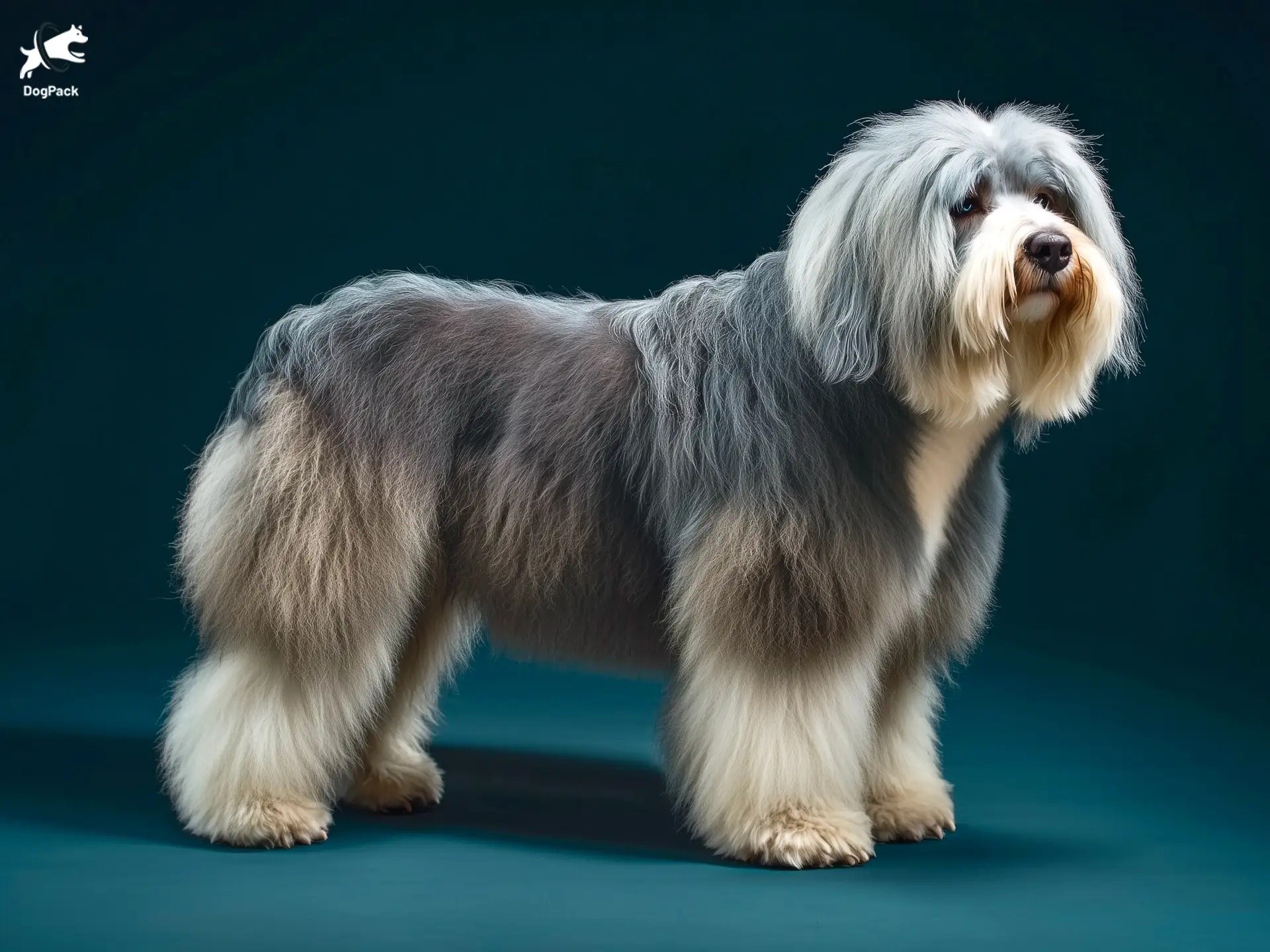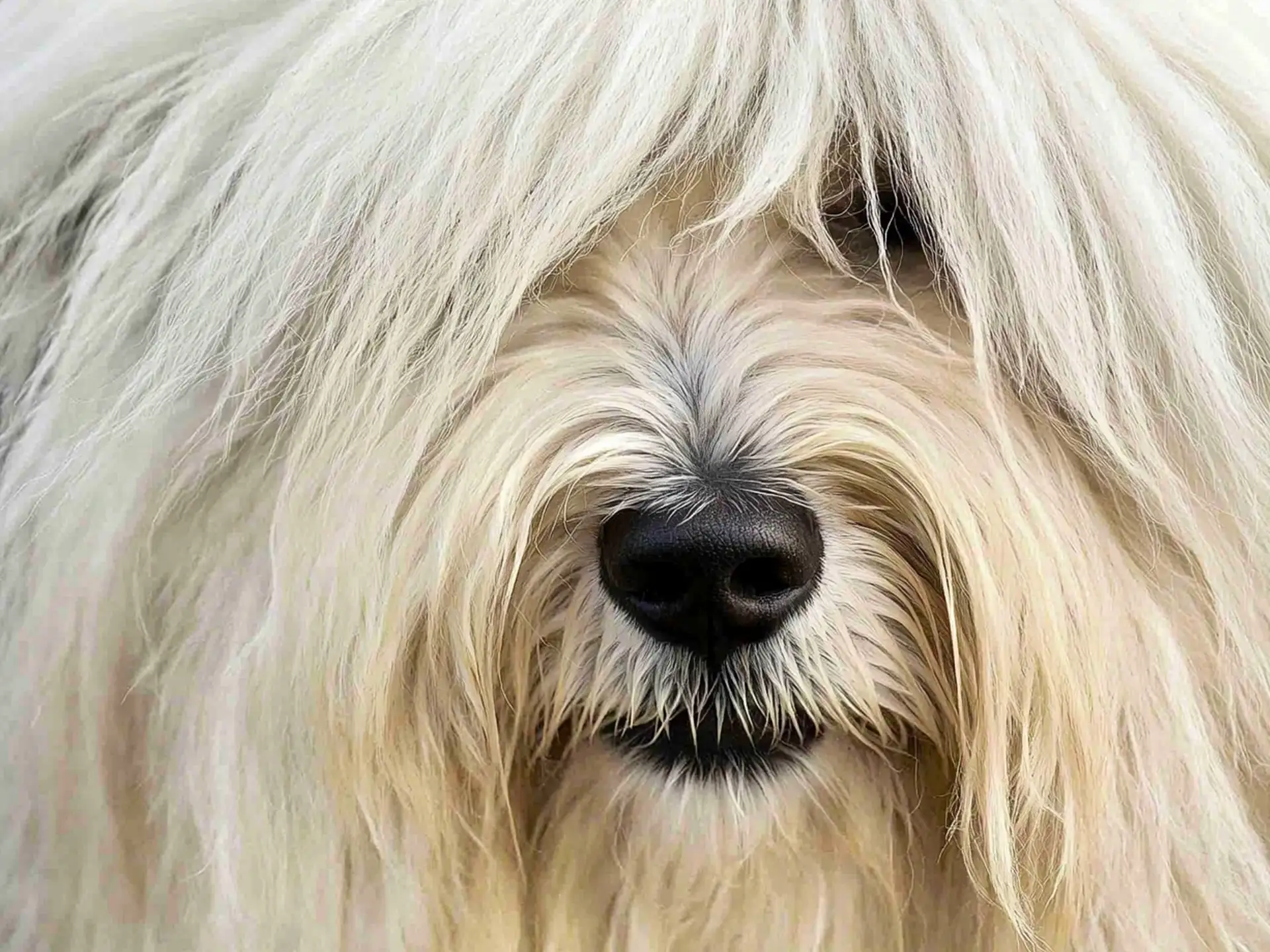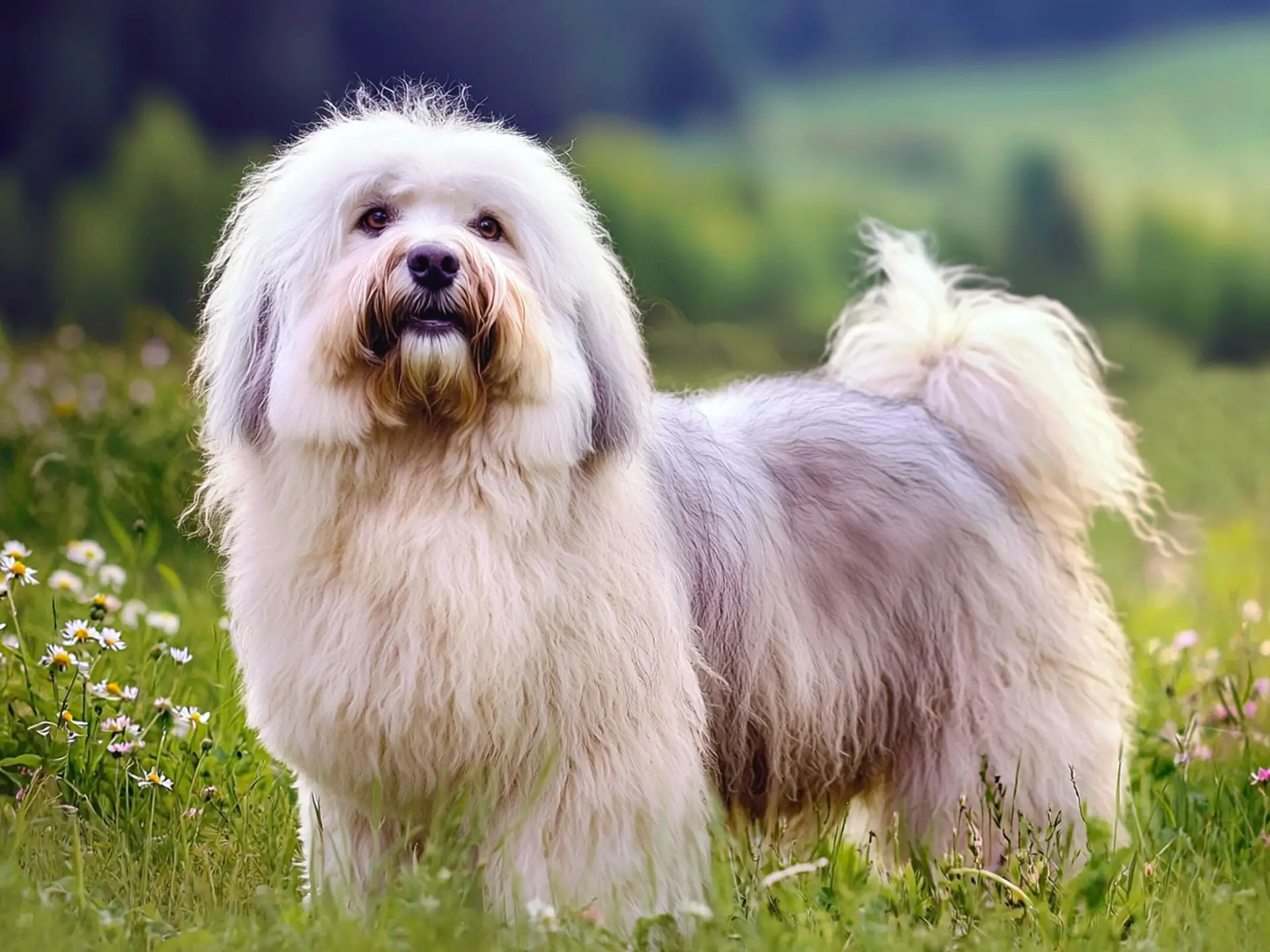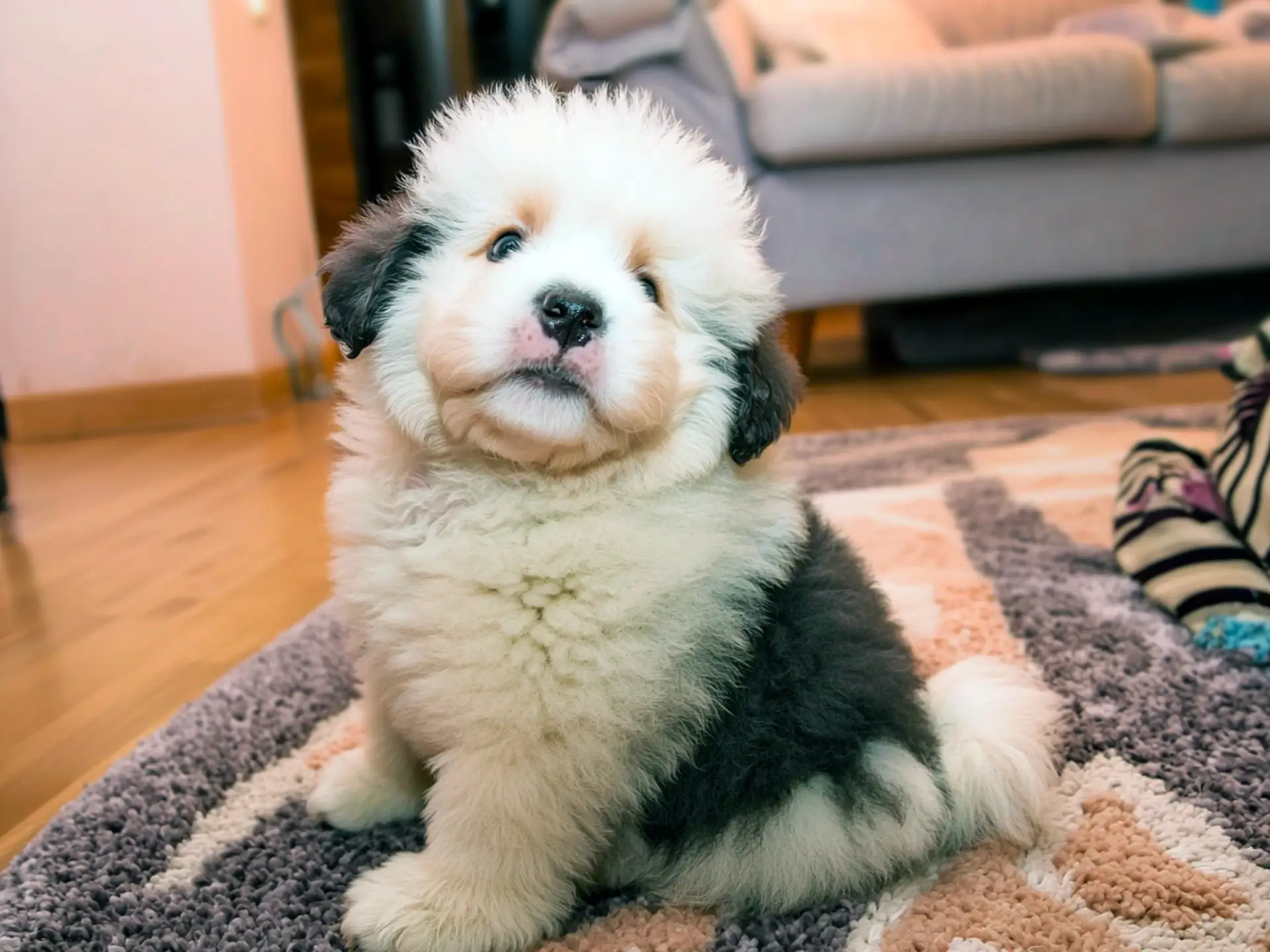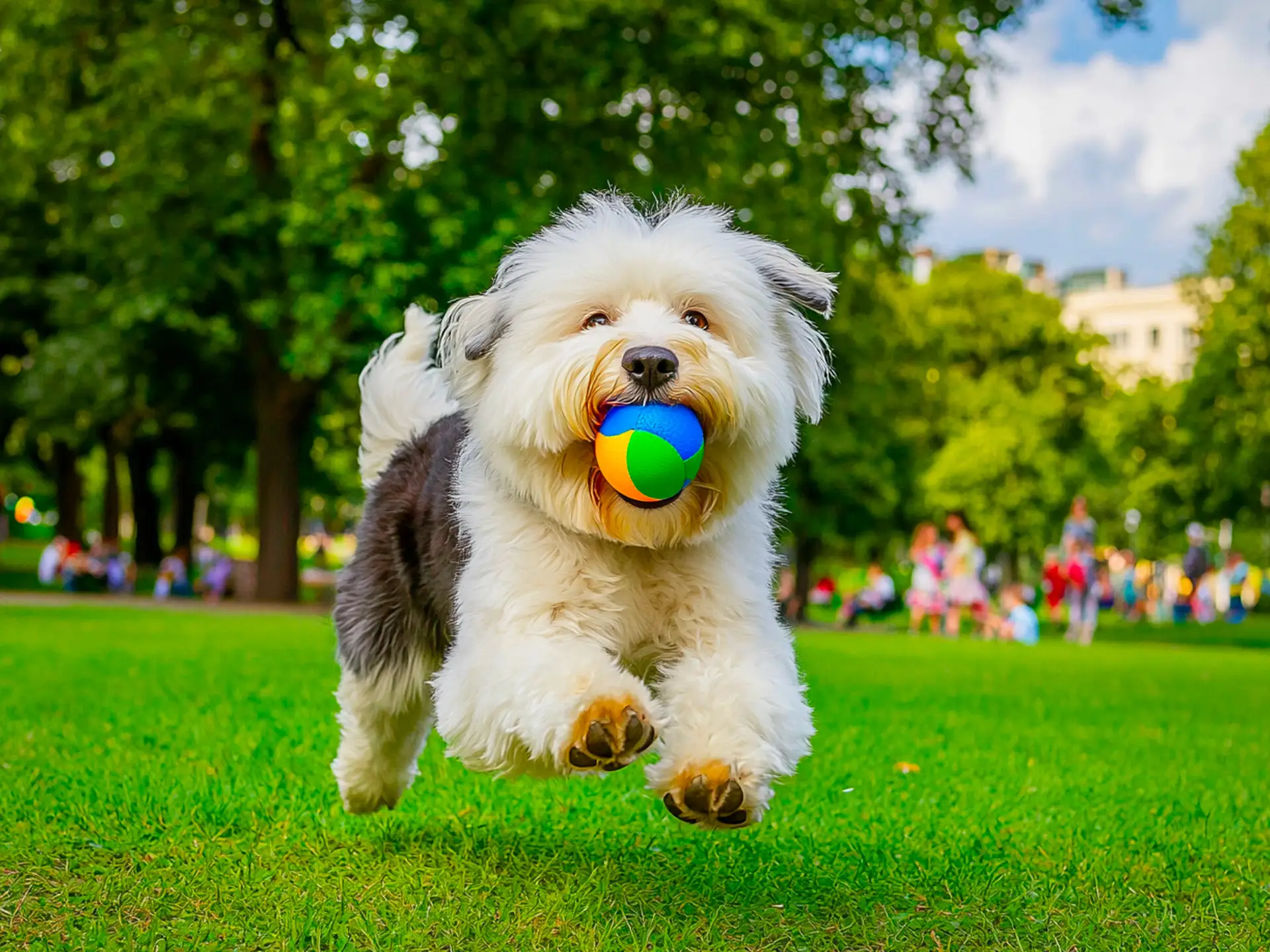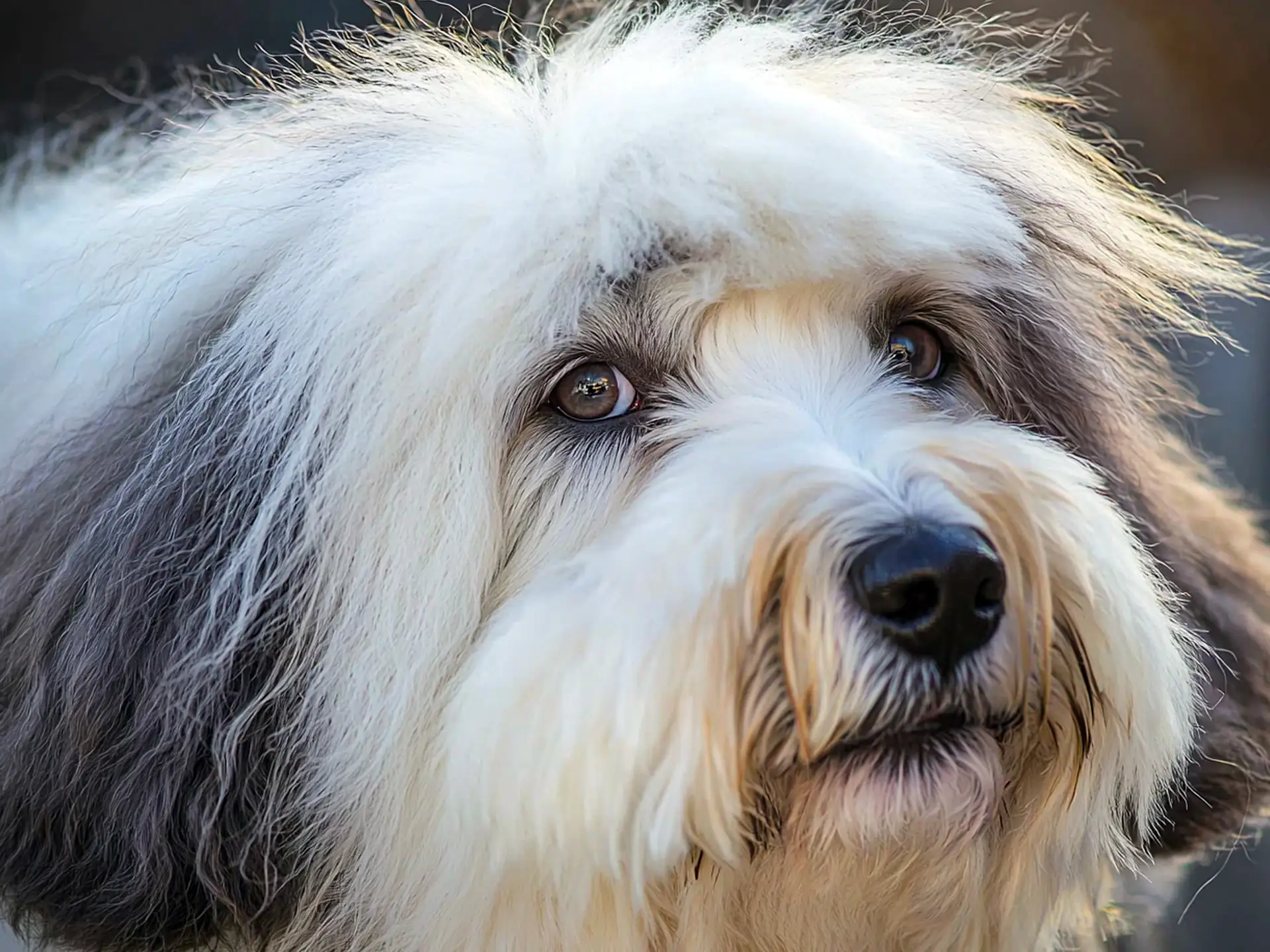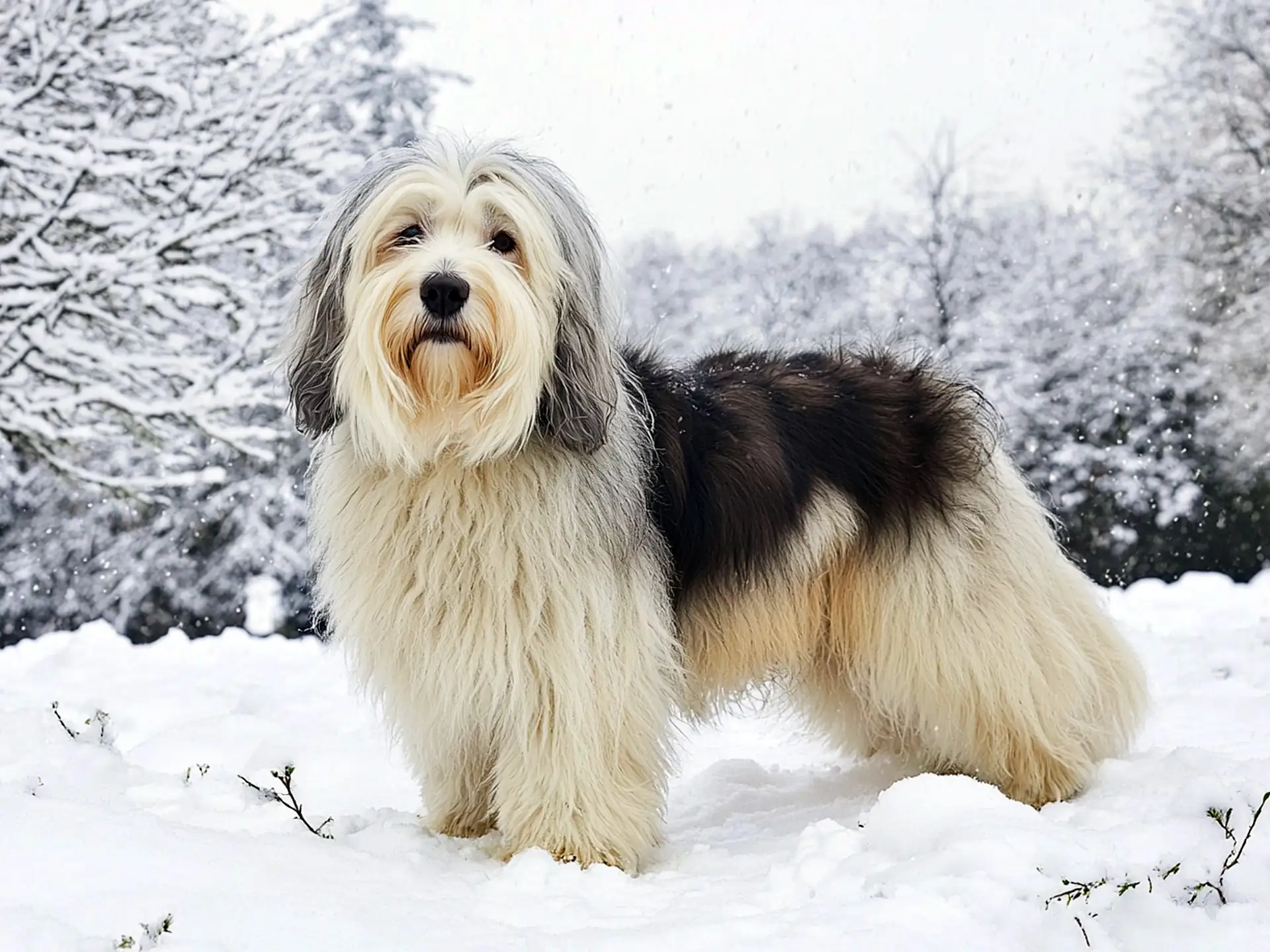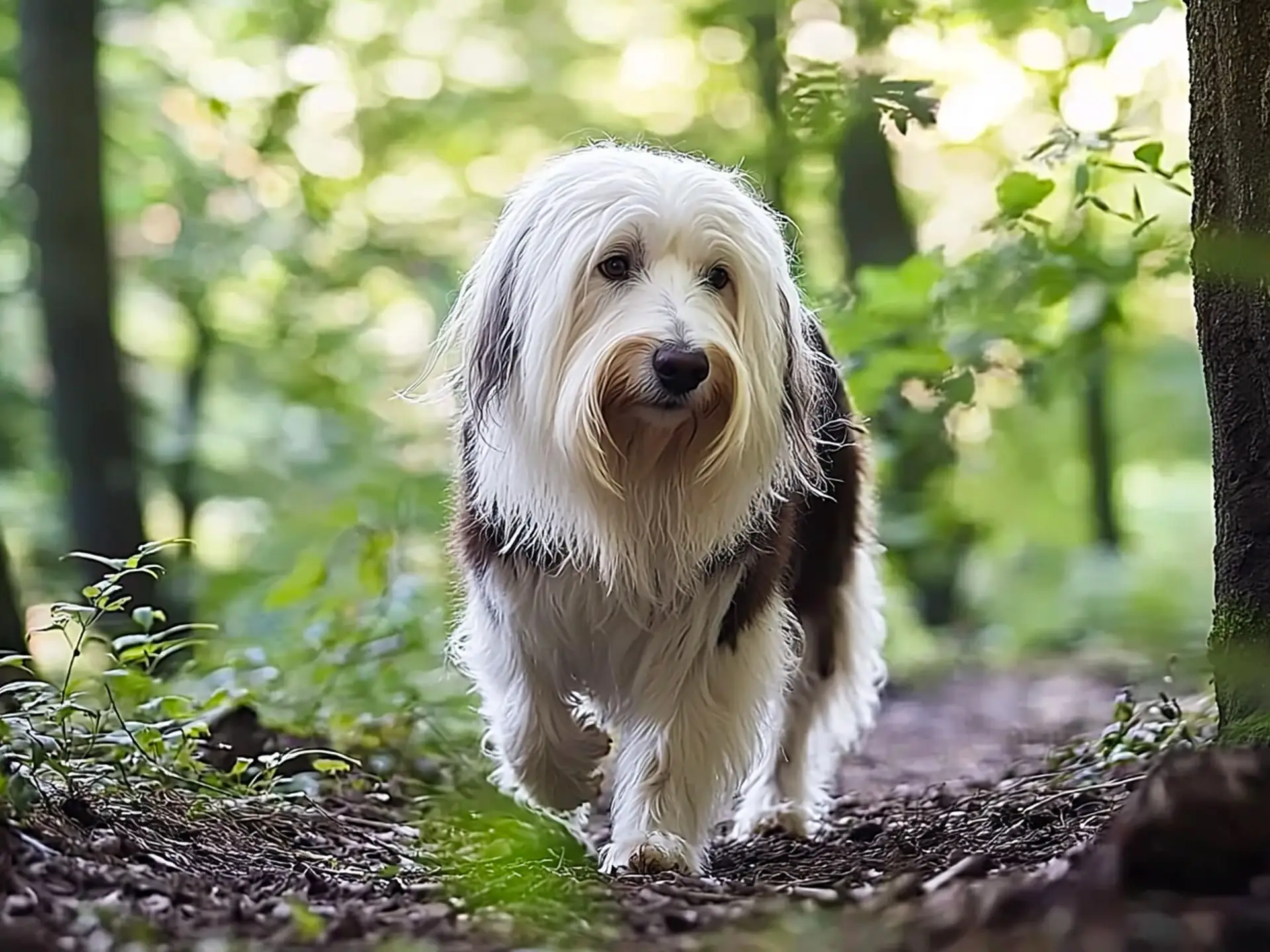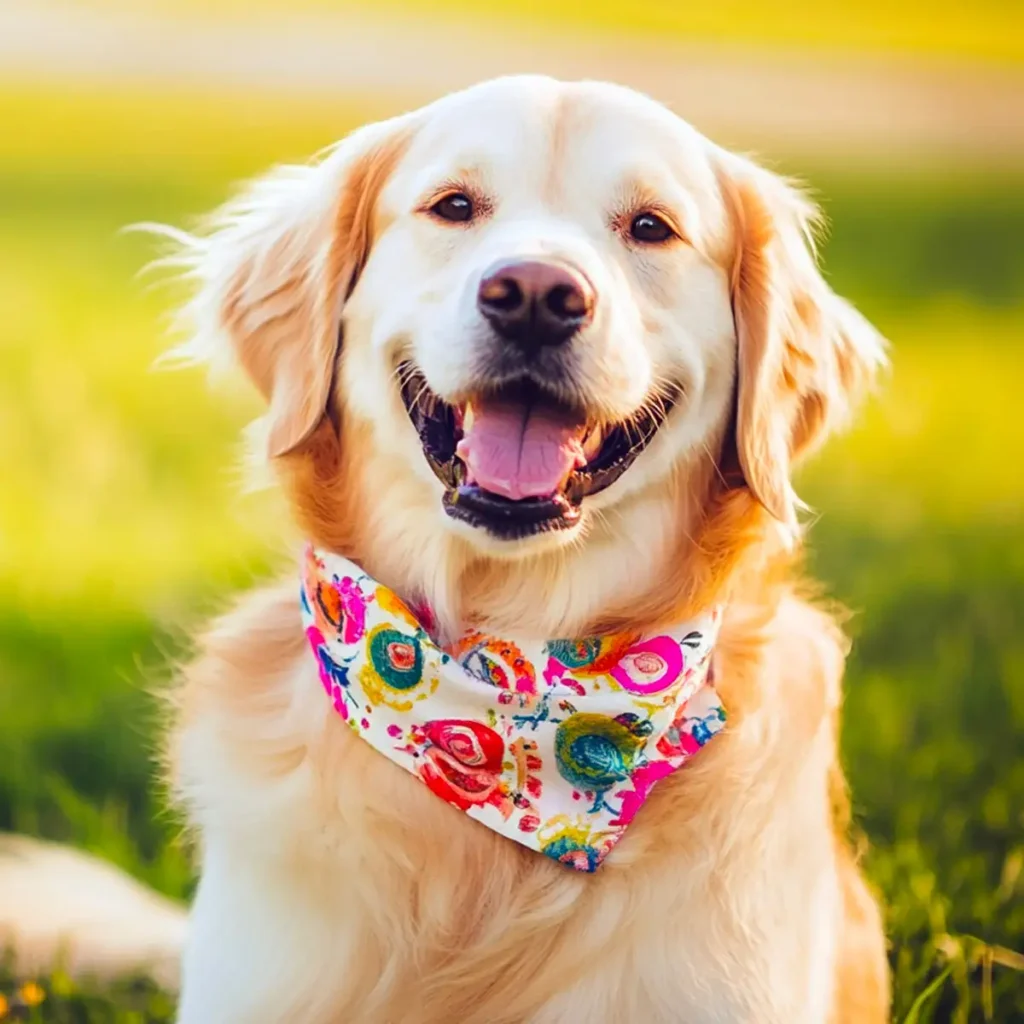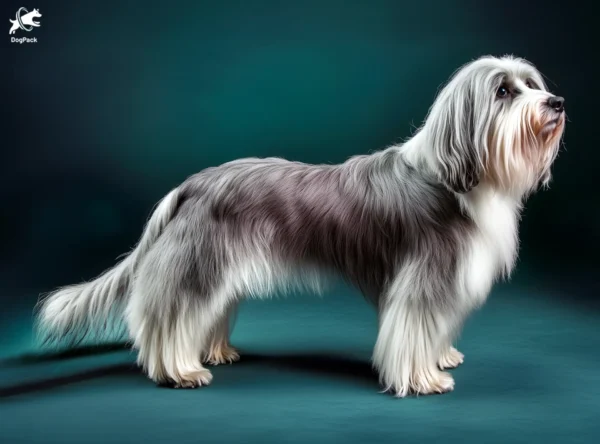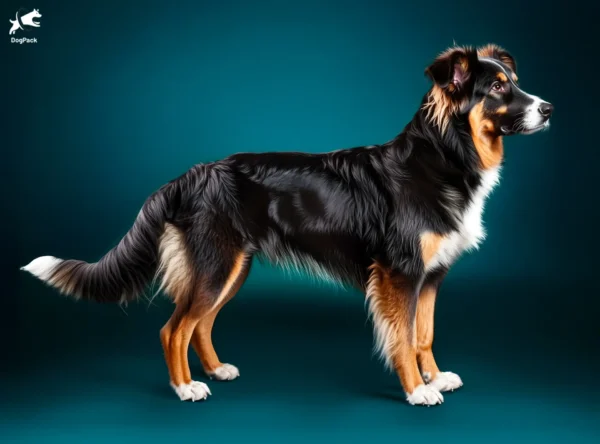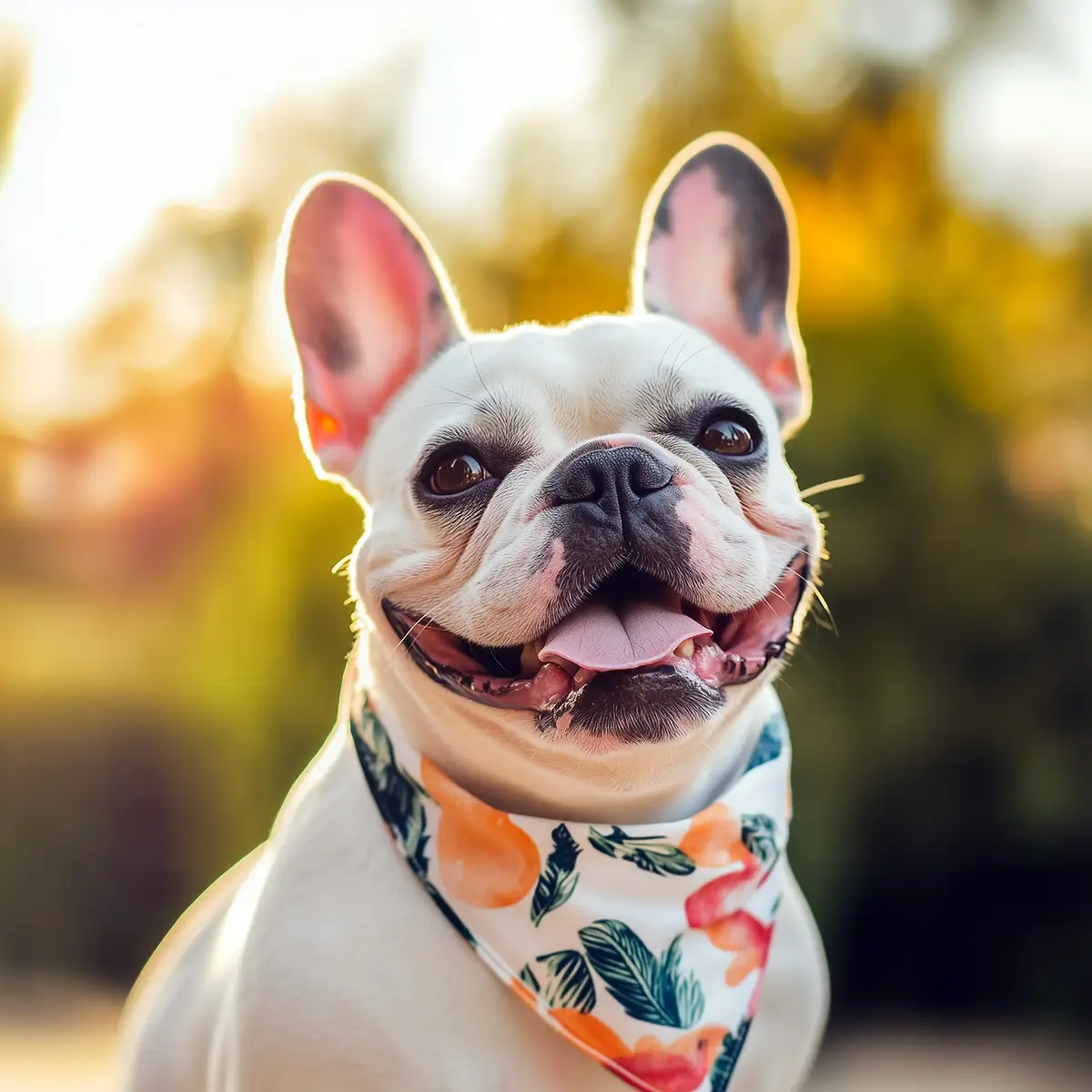Old English Sheepdog Dog Breed Info & Overview
Famous for its shaggy coat and bear-like stroll, the Old English Sheepdog has captured hearts worldwide. Originally a herder, this loyal companion is now a beloved family pet. With a distinct ‘bobtail’ silhouette, it stands out in any crowd. Known for its friendly demeanor, it’s a delightful addition to active households.
Characteristics
Pictures
Breed History
The roots of this heavily coated herder trace back to 18th-century rural England, where farmers needed a versatile dog to move livestock. Early examples worked tirelessly, helping drive sheep and cattle to market. Over time, their characteristic short tail, or “bobtail,” became a breed hallmark. Their shaggy appearance made them memorable, and their hardworking nature made them indispensable.
By the late 19th century, these dogs gained popularity beyond the farm, with enthusiasts refining their look and temperament through selective breeding. Show rings soon welcomed these endearing giants, and their distinct gait and abundant fur turned heads wherever they went. Despite changes in appearance, their steadfast loyalty and herding instincts remained firmly woven into their DNA.
The Old English Sheepdog found international acclaim when they were exported to the United States in the early 1900s. Since then, their reputation as affectionate, fun-loving family members has only grown stronger. Though modern lifestyles differ from their original working days, they still display the same enthusiastic spirit that once made them essential partners to British farmers.
Temperament, Personality
Friendly and outgoing, the Old English Sheepdog often acts like a big, shaggy teddy bear. They’re known to form strong bonds with their family, craving attention and offering plenty of affection in return. While they love playful antics, they can also be calm and laid-back when they feel secure. This combination of energy and warmth is one of their most endearing qualities.
Most of these dogs adore children, making them enthusiastic playmates and gentle protectors. Early socialization, however, is key to ensuring they remain well-mannered around strangers and other pets. Naturally observant, they’ll bark to alert you of any unusual activity, but they’re not usually aggressive. Instead, they prefer to greet newcomers with a friendly tail wag and curious sniff.
Despite their impressive size, these dogs thrive on companionship and can become distressed if left alone for extended periods. They flourish in households where someone is usually around to share cuddles and engage in playtime. A well-rounded, affectionate temperament is the hallmark of this breed, offering a wonderful blend of jovial energy and comforting calm.
Physical Characteristics
At first glance, you’ll notice the Old English Sheepdog’s hallmark shaggy double coat, which creates that charming, huggable silhouette. The fur is especially thick around the neck and hindquarters, giving them a rounded appearance. A distinctive feature is the bear-like head shape, complete with a large nose and soulful eyes often partially hidden behind those flowing bangs.
Though typically grey, white, and sometimes a mix of blue and grizzle, their coloration can vary. Beneath all that fur is a solid, muscular body that enables them to run and herd efficiently. Their hind legs are notably powerful, supporting a distinctive rolling gait. This purposeful stride once helped them navigate rough terrain while guarding or moving flocks.
Standing between 20 and 24 inches tall and weighing up to 100 pounds, the Old English Sheepdog commands attention wherever it goes. Despite its size, it’s agile enough to leap into a playful sprint at a moment’s notice. The combination of substantial build and a warm, fuzzy coat makes this dog an impressive presence in any setting.
Health Issues
Like many large breeds, the Old English Sheepdog can be prone to certain joint problems, including hip and elbow dysplasia. Regular vet checkups and early screening can help detect issues before they become severe. Additionally, they can be susceptible to eye conditions like cataracts or progressive retinal atrophy, both of which can affect vision if not addressed promptly.
Autoimmune diseases, such as autoimmune thyroiditis, have also been observed. Regular blood tests can help track thyroid function and ensure timely treatment if needed. Moreover, they may develop skin issues under their thick coat due to trapped moisture, leading to irritation or infections. Routine grooming and close monitoring of any hot spots will help keep the coat and skin healthy.
A balanced diet, combined with moderate exercise, supports overall health and maintains a healthy weight. Many owners opt for joint supplements like glucosamine or chondroitin, particularly for senior dogs. Regular checkups, including dental exams, are crucial for detecting early signs of potential problems. With mindful care, these dogs can lead full, active lives well into their golden years.
Grooming Needs
The Old English Sheepdog’s iconic coat demands diligent upkeep. Brushing thoroughly at least three times a week helps remove tangles and prevent matting, especially around the legs and belly. Many owners section the fur to ensure they reach every spot. Skipping this routine can lead to dense knots that are uncomfortable for the dog and difficult to remove.
Regular bathing is also essential, although too much shampooing can dry out their skin. A monthly bath or even less frequent, depending on their activity level, is often sufficient. Some owners prefer professional grooming, which can help shape the coat and trim around the eyes. Maintaining clean, well-groomed fur promotes better hygiene and reduces the risk of skin irritations.
Don’t forget about regular nail trims and dental care. Overgrown nails can affect the dog’s gait, while neglected teeth can lead to gum disease or tooth loss. Paying special attention to the ears is important too, as wax buildup can go unnoticed under all that hair. Routine grooming not only keeps them looking fabulous but also serves as a bonding experience.
Exercise Requirements
Despite the Old English Sheepdog’s laid-back demeanor at home, these dogs benefit from daily walks, games of fetch, or other moderate activities. Their history as herders means they still possess a decent stamina. Offering a variety of exercises keeps them physically fit and mentally stimulated. Too little exercise can result in boredom, which may lead to unwanted behaviors like chewing or excessive barking.
Many enjoy joining their humans on short hikes or leisurely runs. A fenced yard offers space for spirited romps, but they adapt well to city life if walked regularly. Engaging puzzle toys, such as treat-dispensing balls, also provide mental exercise. By balancing both physical and mental challenges, you help them stay content and channel their energy in positive ways.
For herding enthusiasts, advanced activities like canine herding trials can be a fantastic way to tap into their instincts. These events simulate the breed’s traditional work and challenge them to demonstrate focus and agility. Whether it’s backyard fun or structured sports, consistent exercise routines will nurture a healthy, well-adjusted companion ready to relax at the end of the day.
Training Tips
Smart yet sometimes stubborn, the Old English Sheepdog benefits greatly from early obedience training and socialization. Reward-based methods, like treats or praise, usually yield the best results, as they respond well to positive reinforcement. Consistency and patience are key, especially during puppyhood when they’re brimming with curiosity. Establishing clear boundaries early on prevents confusion down the road.
Short, frequent sessions work better than long, repetitive drills. They can quickly lose interest if training becomes monotonous. Make lessons fun by incorporating play and variety, which keeps them engaged and motivated to learn. While firm leadership is necessary, harsh corrections may cause them to shut down or become anxious. Gentle guidance fosters trust and boosts confidence in the learning process.
Continuing education beyond basic commands is highly beneficial. Advanced tricks or specialized courses, such as agility or rally obedience, keep their minds busy and bodies active. Regular, incremental challenges stave off boredom and reinforce good behavior. Whether it’s mastering a quick recall or navigating an obstacle course, building on their natural intelligence can transform them into remarkable canine achievers.
Nutrition, Diet
An adult Old English Sheepdog typically thrives on high-quality, protein-rich food formulated for large breeds. Look for kibble with moderate fat content to maintain a healthy weight and support joint health. Because they can weigh anywhere from 60 to 100 pounds, portion sizes generally range from three to four cups of dry food daily, split into two balanced meals.
If your dog is particularly active or participates in agility training, you may need to increase their daily intake slightly. Monitoring their body condition is critical—if ribs are difficult to feel, reduce the meal size or switch to a lower-calorie formula. Conversely, if they appear too lean, consult your vet about boosting calories or adjusting the type of kibble or wet food.
Given their susceptibility to bloat, avoid vigorous exercise immediately before or after meals. Some owners opt for raised feeding bowls, though opinions vary on their effectiveness. Supplements like fish oil can help support joint function and improve coat quality. Always introduce dietary changes gradually to prevent digestive upset, and schedule regular vet visits to fine-tune their nutritional plan.
Adoption, Breeders
For those seeking a puppy, reputable breeders who prioritize health testing are essential. Ask for certification on hips, elbows, and eyes, common concerns for this breed. Visiting the facility allows you to observe the parent dogs’ temperament and living conditions. Well-regarded organizations, such as the Old English Sheepdog Club of America, can guide you to ethical breeder listings and additional resources.
Adopting an adult Old English Sheepdog from a rescue can be equally rewarding. Breed-specific shelters assess each dog’s personality and medical background, helping match you with a suitable companion. Adoption fees typically cover initial vet care, microchipping, and vaccinations, making it a cost-effective way to welcome a loyal friend. Patience and consistency can ease any adjustment challenges in a new home.
Before finalizing any adoption, carefully review the dog’s history and discuss potential health concerns with a veterinarian. Organizations like Petfinder often list available rescues nationwide, providing a variety of ages and temperaments. Whether you choose a breeder or a shelter, thoroughly researching your options will help you find a reliable source and ensure a happy, lifelong partnership.
Family Pet?
Many households find the Old English Sheepdog to be an ideal playmate and guardian for children. Their gentle disposition makes them patient and protective without being aggressive. They often join in on family activities, whether it’s a casual picnic or a rambunctious backyard game. Because of their size, supervised interactions with very young kids are recommended for everyone’s safety and comfort.
Although typically friendly, they do best when introduced early to a variety of people and other pets. Socializing them from puppyhood helps curb any herding instincts directed at family members or smaller animals. This early training also fosters a confident temperament. In a home that appreciates frequent grooming sessions and daily walks, they’ll flourish as affectionate and entertaining companions.
As with any large breed, you’ll need adequate space for them to relax without feeling cramped. Apartments can work if you’re committed to regular outdoor activity and proper exercise. They show plenty of affection and are often content curling up near their loved ones at the end of the day. In return, you’ll gain a steadfast friend who thrives in a busy household.
Right For You?
If you appreciate an outgoing, playful dog and don’t mind regular grooming, this breed might be your dream companion. The Old English Sheepdog’s affectionate nature and clownish personality will delight owners who have the time and space to keep it active. However, they’re not the best match for those seeking a low-maintenance pet or those living in cramped conditions.
Family members with allergies should be prepared for regular fur around the house—though not extreme shedders, they do leave a noticeable trail of fluff. Maintaining their coat can be time-consuming, so budgeting for professional grooming may be wise. Daily exercise needs must also be factored in, making them better suited to individuals or families committed to an active lifestyle.
Ultimately, your willingness to invest time, effort, and love determines the success of bringing this dog into your home. Regular walks, mental stimulation, and grooming sessions are par for the course. If you’re eager to share your life with a larger-than-life companion who rewards you with unwavering loyalty, this breed could be an excellent fit.
Conclusion
With its signature shaggy coat and friendly demeanor, the Old English Sheepdog often wins hearts at first sight. This large breed thrives in environments where it can stay active and relish quality time with its people. While the grooming requirements can be hefty, many owners find the extra effort worthwhile for such a loyal, affectionate companion. If you’re ready to commit to regular coat care, daily exercise, and plenty of social interaction, this charming “bobtail” could make a fantastic addition to your life. Ultimately, meeting their needs ensures a lifetime of playful antics, unwavering devotion, and furry cuddles. No matter your family size, if you can provide enough room to romp and plenty of attention, you’ll likely find a steadfast friend in this beloved breed.
FAQs
-
Why does an Old English Sheepdog’s coat change color as it matures?
Old English Sheepdog puppies are usually born black and white, but their coat gradually fades to shades of gray, blue, or silver as they mature. This color transition is due to a genetic dilution effect, which can take up to two years to fully develop.
-
Do Old English Sheepdogs have tails?
Traditionally, Old English Sheepdogs were bred with naturally short tails or had them docked to distinguish them from tax-paying companion dogs in 18th-century England. In many countries today, docking is banned, so some Old English Sheepdogs now have full, fluffy tails.
-
Why do Old English Sheepdogs sometimes “bounce” when they walk?
Their distinctive rolling or bouncing gait is due to their deep chest, muscular frame, and shaggy coat, which gives them a bear-like movement. This unique stride helped them cover long distances efficiently when herding livestock in the past.
-
Can Old English Sheepdogs recognize faces despite their fur covering their eyes?
Yes! Old English Sheepdogs rely on keen hearing, scent, and peripheral vision to recognize people and surroundings. Some owners trim the fur around their eyes or tie it back to improve visibility, but they naturally adapt well to their fluffy facial coverage.
-
Why is the Old English Sheepdog nicknamed “Bobtail”?
The breed is commonly referred to as “Bobtail” because of its historically docked or naturally short tail. This practice was once common among working sheepdogs to prevent injuries while herding and to classify them as tax-exempt working dogs in England.
Breed Ratings
The Old English Sheepdog is clever, picking up commands if training remains consistent and engaging, but mild stubbornness can appear.
Expect a fun-loving spirit at all ages: they clown around, toss toys, and eagerly join family games, especially if children are involved.
They can be moderately active but not hyper. Regular walks, play sessions, or short jogs keep them balanced and prevent boredom-induced mischief.
Though their long coat might suggest heavy shedding, they mostly lose hair during brushing sessions. Proper grooming reduces loose fur indoors.
They have some herding instincts but rarely chase wildlife. Early socialization helps them live peacefully alongside smaller animals.
Frequent brushing and occasional professional trimming are musts. Neglecting their dense coat leads to matting, making grooming a challenging endeavor.
Eager to please and responsive to treats, they learn commands well. Patience is key to handle the occasional stubborn streak.
Extended isolation can trigger stress or anxiety. They crave human company and do best when someone is nearby most of the time.
They’re known for deep barks to alert owners. While not incessant, boredom or lack of socialization can heighten their vocal tendencies.
Not especially slobbery compared to other big breeds. Some drool may appear after drinking, but it’s generally manageable with a quick wipe.
Generally sociable with other dogs when socialized early. They enjoy playdates and can adapt well to multi-dog households.
With proper care and routine vet checks, they remain robust. Watch for joint or eye issues, and maintain a healthy weight to prevent strain.

